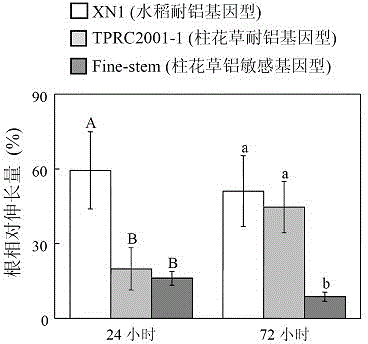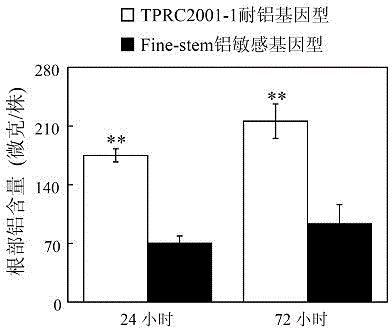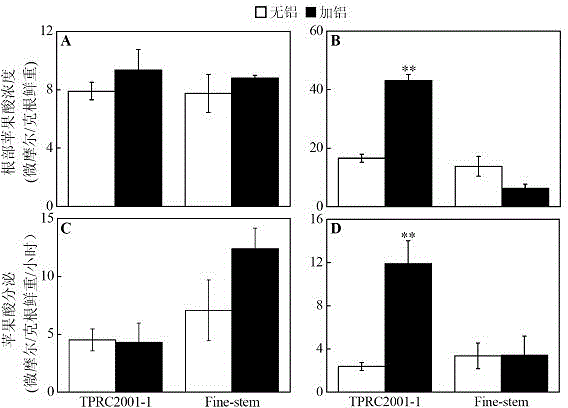A kind of malic enzyme gene sgme1 and its application
A malic enzyme gene and malic enzyme technology, applied in the field of plant biology, can solve problems such as aluminum stress
- Summary
- Abstract
- Description
- Claims
- Application Information
AI Technical Summary
Problems solved by technology
Method used
Image
Examples
Embodiment 1
[0052] 1. Isolation and identification of SgME1 protein
[0053] Refer to Chen Zhijian et al. (2011) method to extract Stylosanthes root protein and perform two-dimensional electrophoresis. Three replicates were set for each experimental treatment, and the protein spots that were significantly differently expressed between the non-aluminum control and the aluminum treatment were screened, and MALDI-TOF / TOFMS mass spectrometry analysis was performed with ABI4700TOF-TOF (Applied Biosystems, USA).
[0054] The result is Figure 4 As shown, it can be seen from the results that, compared with the control, the accumulated amount of SgME1 protein in the roots of Stylosanthes after 24 hours of aluminum stress did not change significantly. However, after 72 hours of aluminum stress, the accumulation of SgME1 protein increased significantly in the roots, indicating that the expression of SgME1 protein was enhanced by long-term aluminum stress.
[0055] 2. SgME1 Gene...
Embodiment 2
[0087] Research on genetically modified materials
[0088] 1. Obtaining genetically modified materials
[0089] (1) Obtaining yeast transgenic strains
[0090] With reference to SCeasycomptransformationkit (Invitrogen, USA), pYES2- SgME1 The empty vector of pYES2 was transformed into yeast INVSC1.
[0091] (2) Obtaining of genetically modified kidney bean hairy roots
[0092] The constructed expression vector was transformed into Agrobacterium rhizogenes K599, and the transgenic hairy roots were obtained by Agrobacterium-mediated induction of bean hairy roots in vitro.
[0093] (3) Obtaining transgenic Arabidopsis plants
[0094] The constructed expression vector plasmid was transformed into Agrobacterium tumefaciens Gv3101, and Agrobacterium-mediated Arabidopsis inflorescence transfection was used to obtain transgenic Arabidopsis plants.
[0095] 2. Detection of genetically modified materials
[0096] (1) Detection of yeast transgenic strains
PUM
 Login to View More
Login to View More Abstract
Description
Claims
Application Information
 Login to View More
Login to View More - R&D
- Intellectual Property
- Life Sciences
- Materials
- Tech Scout
- Unparalleled Data Quality
- Higher Quality Content
- 60% Fewer Hallucinations
Browse by: Latest US Patents, China's latest patents, Technical Efficacy Thesaurus, Application Domain, Technology Topic, Popular Technical Reports.
© 2025 PatSnap. All rights reserved.Legal|Privacy policy|Modern Slavery Act Transparency Statement|Sitemap|About US| Contact US: help@patsnap.com



